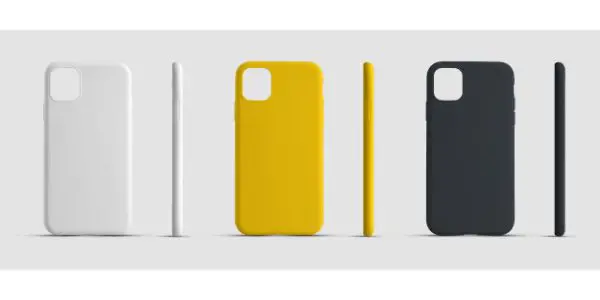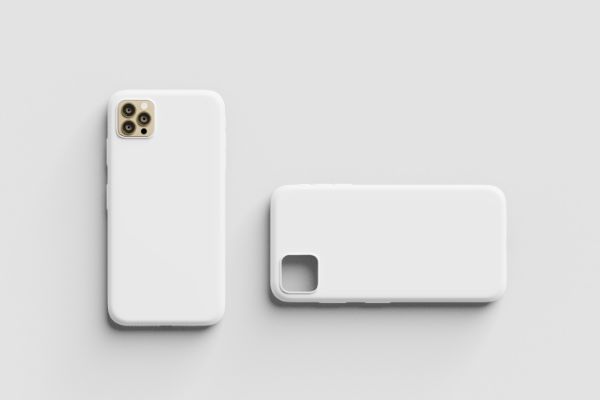Disclaimer: This post may contain affiliate links, meaning we get a small commission if you make a purchase through our links, at no cost to you. For more information, please visit our Disclaimer Page.
Smartphones are some of the most versatile pieces of technology that people all around the world use today. They are large enough to enjoy different kinds of media on the screens. Conversely, they tend to remain small enough that we can carry most models in our pockets with us.
Most smartphones come from the manufacturer already loaded up with several apps that people might find useful, and we can download custom apps of our choice from digital storefronts. All in all, phones are small, computerized devices that we can use for a huge range of tasks each day. However, some of these devices are expensive yet delicate. Additionally, some people like to personalize the exteriors of their phones.
For the reasons above, many smartphone owners want to get cases to fit over the frames of their phones. While this process may seem fairly straightforward, there are some tough questions that some prospective phone case consumers might have about these products. Our goal here will be to answer some of the questions around phone cases that might not be the most common ones that people ask online.
Some of our topics will address whether phone cases can have negative physical effects on the devices themselves. Further, we will ask some questions that deal with how well a case inside a phone might send and receive data, keep access to its ports open, and utilize its apps.
Table of Contents
Do Phone Cases Scratch the Phone?
Yes, it is possible for some phone cases to leave scratches on your phone itself. However, this is not necessarily a given with all kinds of phone cases that you might purchase for your device. Namely, this issue can depend on what type of material the manufacturer uses to construct the phone case.
Harder phone cases might be more prone to scratching the back or sides of your smartphone than cases that use other materials. Another possibility may relate to how dust contains certain particles that can scratch a phone frame. When you combine both of these issues, you have a recipe that might lead to small imperfections appearing on the back panel of your phone.
To address our first problem, a harder case uses materials that might be somewhat abrasive to the smooth, relatively glossy finish that you can find on many smartphones today. Although the manufacturer of a particular phone case will design it to fit the size and shape of unique phone models as much as possible, the device may not remain completely static while it is inside the enclosure.
Small movements as the phone bounces around in your pocket or during use can cause the panels to rub against the inside of the case. In doing so, the panels on the rear of the phone can collide with the hard material of the case to form tiny scratches. These markings might be visible to you only when you hold the smartphone at particular angles, but they can still be annoying to new phone owners.
On a related note, a case should keep some of the usual debris from getting to all sides of the smartphone and its panels. However, tiny particles of dust will still be small enough to get between the case and the sides of the device.
Additionally, this dust may contain abrasive elements that can scratch the finish on your phone. When the dust gets inside the phone case, it can rub against the panels and cause this kind of damage.
You can see this same sort of problem if you use inferior screen protectors. A bad protector can trap dust in the same way that a phone case might, and particles can build up between the screen and a protector you may install poorly.
In either case, you might cause small scratches on the front surface of your phone’s screen. Therefore, both a phone case and a front protector have the potential to scratch the surface of the device.
One way that you might be able to mitigate the problem of scratches is to use a softer vinyl case instead of a hard one. Materials like vinyl or rubber should be softer than the hard panels that encapsulate your phone’s components.
Although trapping dust might still be an issue for any kind of casing, these models should not be able to cause scratches on the surface of the phone because of movement, rubbing, or other such things that can happen as you use your device daily.
Can a Phone Case Bend a Phone?
Even if you decide to use a hard case for your phone, it is extremely unlikely that the case itself should bend the phone. Most phones have quite durable shells all on their own. It may be possible that you get a phone that has a frame that seems to bend out shape slightly after some use.
However, this would point to a defect in the manufacturing process for that phone rather than any problem with the case. Most phones, if the developer makes them properly, should not bend out of shape under normal use conditions.
If you do have a phone like this, it may be worth it to look at the warranty agreement that your manufacturer sets. This sort of problem may fall under the defects in workmanship that many such warranties will cover already.
Similarly, no phone case should be hard or aggressive enough to bend the device. If this is true, you may have a defective case on your hands. Phone accessory builders make different types or sizes of cases that you can pair with specific phone models.
Although the developers intend for these cases to hold and protect the phones quite securely, they should not be tight enough to bend the device out of its original shape. Again, this sort of problem is something you may be able to address with either the manufacturer of your phone or maker of your case.
In either scenario, it is important to consider other possibilities. For example, it is much more likely that a hard impact to one of its sides would cause the frame of a phone to bend slightly.
Why Do Phone Cases Have Holes?
Nearly all the phone cases you see or purchase will have some holes in the frame. There can be a few reasons for this sort of design, and some of them are more practical than others. Every phone case will need at least a few holes in various locations.
For the most part, these cutouts facilitate using the phone’s ports while it is still in the case. You can plug or unplug other devices that the phone may communicate with, and you can do all of this without first removing the device from its protective case. Some examples of this might include the charging port or headphone jack.
In other things, you need cutouts on the phone in order to utilize its features fully. As an example, the cameras on the back of the phone need to be able to see and snap photos of content. For this reason, you’ll find several holes clustered together on the rear of most phone cases.
When you buy a certain case for a particular phone model, it will have these cutouts exactly where they need to be in order to let the camera do its work. Openings for power or volume buttons are also common on these accessories.
However, you might notice a few extra holes that don’t seem to be for any immediate benefit to the phone’s operation. Some cases may have tiny holes that allow you to access your SIM tray without taking the device out of the case. This function would require the case to have yet another cutout for the tray itself, but you may find some models like this.
Should you find any phone cases with holes that don’t seem to be for any kind of input or output, they might be there to allow you to attach straps or charms to the case as a way to customize it.
Can a Phone Case Affect Your Phone’s Reception?
It is not likely that most phone cases would interfere with the reception that the device gets. Most phone cases use relatively thin materials with compositions that should not mess up the way in which your phone sends or receives wireless signals.
However, it is still possible that some materials or particular phone case models could degrade the quality of the signal of your smartphone. Most of the time, this might be due to metallic panels that have the ability to disrupt the signals. Even in such scenarios, you might find metal cases that are thin enough to work without any issues.
Does Google or Apple Pay Work With a Phone Case?
Although this may depend on the specific case that you get, methods of contactless payment should have no problems with most phone cases. When you use Apple or Google Pay to purchase things, the phone operates with a near-field communication protocol. The strength of the NFC signal should be greater than anything the phone case and its materials should be able to absorb.
Conclusion
Phone cases add an extra layer of protection to some of our favorite and most useful devices. They are also a great way to personalize these items. In rare scenarios, you may get some scratches on your phone from the hard materials in the casing.
However, many models are soft enough to negate this, and most of the phone cases you find should not warp the phone or interfere with its reception quality.



